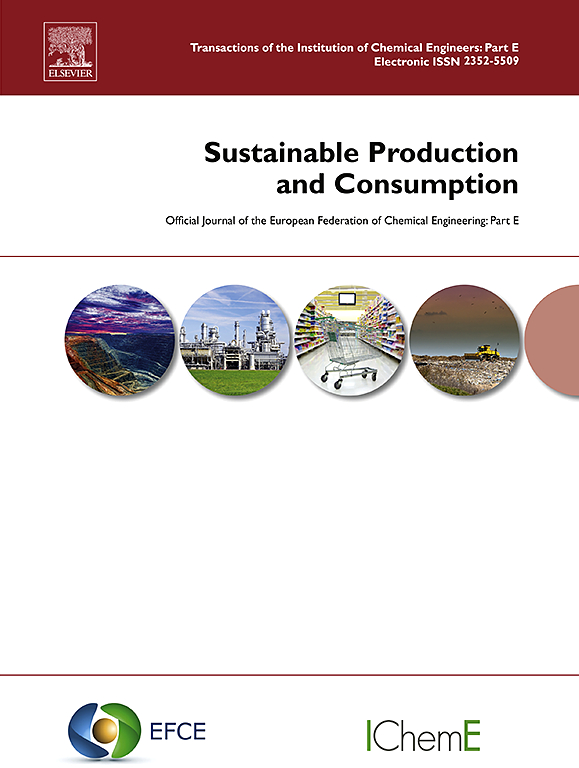瑞典市镇和邮编一级商品和服务消费的碳足迹及政策干预措施
IF 10.9
1区 环境科学与生态学
Q1 ENVIRONMENTAL STUDIES
引用次数: 0
摘要
碳足迹显示与商品和服务消费相关的温室气体排放量。目前,许多国家都在国家层面计算碳足迹,并作为国家环境账户的一部分予以公布。然而,地方或区域层面的碳足迹估算并不常见。市政当局呼吁获得一致且可比较的碳足迹数据,以支持其低碳转型。本研究提供了瑞典所有城市家庭碳足迹的估算数据,细化到邮政编码级别。该研究采用降尺度方法,将瑞典全国碳足迹从国家层面分解到瑞典邮政编码层面,在最小的地理尺度上,使用可获得的有关支出、温室气体排放或其他数据(如能源使用)的最佳地方数据。研究分析了市级和邮编级碳足迹的差异,并确定了主要的消费类别。研究结果表明,瑞典邮政编码层面的平均碳足迹差异相当大,在人均约 3.7 吨二氧化碳当量到 17.8 吨二氧化碳当量之间。航班和个人车辆等项目的碳足迹差异较大,而食品、电力和服装等消费类别的碳足迹则较为相似。收入与总碳足迹之间存在很强的正相关性。个人车辆的碳足迹与人口密度呈负相关,而服装、餐馆和航班的碳足迹与人口密度呈正相关。一些城市还展示了将研究中的初步数据应用于提高公众意识、政策制定和监测实现减排目标的进展情况。关于未来开发和使用这些数据制定政策和决策的建议包括(1) 确保数据的获取、学习和利益相关者对数据的参与;(2) 利用数据制定政策愿景和目标以及相关的减排目标;(3) 设计能够减少碳足迹的政策干预措施,同时考虑当地范围内和消费类别之间的差异、地理、社会经济环境、不平等和系统性变化等因素。本文章由计算机程序翻译,如有差异,请以英文原文为准。
The carbon footprints of consumption of goods and services in Sweden at municipal and postcode level and policy interventions
Carbon footprints show the greenhouse gas emissions associated with consumption of goods and services. Many countries now calculate carbon footprints at the national level, published as part of national environmental accounts. However, carbon footprint estimates at the local or regional levels are less common. Municipalities call for consistent and comparable carbon footprint data to support their low carbon transitions.
This study presents estimates of households' carbon footprints for all Swedish municipalities, down to the postcode level. It uses a downscaling approach to disaggregate the Swedish national carbon footprint from the national level to Swedish postcode level, using the best available local data on expenditure, greenhouse gas emissions or other data such as energy use, at the smallest geographical scale. The variation in carbon footprints at municipal and postcode levels is analysed and key contributing consumption categories identified. The study then discusses how these data can and have been used to support policymaking.
The results show considerable variations in average carbon footprints at the postcode level in Sweden, between about 3.7 and 17.8 t CO2eq per capita. Footprints of items such as flights and personal vehicles have high variation, whereas the consumption categories of food, electricity, and clothing are more similar. A strong positive correlation exists between incomes and the total carbon footprint. Carbon footprints from personal vehicles have a negative correlation to population density, while the footprint of clothing, restaurants and flights have a positive correlation to population density.
In terms of policy, several municipalities in Sweden were found to have carbon footprint reduction goals and related policies. A number of municipalities also demonstrated the application of preliminary data from the study for raising public awareness, policymaking, and monitoring progress towards reduction targets. The recommendations for future development and use of these data for policy and decision-making include: (1) ensuring data access, learning and stakeholder engagement with the data; (2) using the data to develop policy visions and goals and associated reduction targets and; (3) designing policy interventions that will reduce carbon footprints, taking into account factors such as variation at the local scale and between consumption categories, geography, socio-economic circumstances, inequalities, and systemic change.
求助全文
通过发布文献求助,成功后即可免费获取论文全文。
去求助
来源期刊

Sustainable Production and Consumption
Environmental Science-Environmental Engineering
CiteScore
17.40
自引率
7.40%
发文量
389
审稿时长
13 days
期刊介绍:
Sustainable production and consumption refers to the production and utilization of goods and services in a way that benefits society, is economically viable, and has minimal environmental impact throughout its entire lifespan. Our journal is dedicated to publishing top-notch interdisciplinary research and practical studies in this emerging field. We take a distinctive approach by examining the interplay between technology, consumption patterns, and policy to identify sustainable solutions for both production and consumption systems.
 求助内容:
求助内容: 应助结果提醒方式:
应助结果提醒方式:


